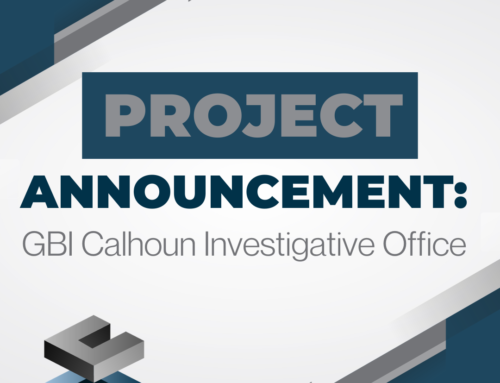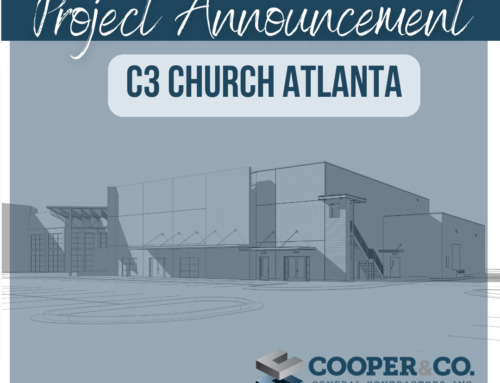The word essential has never trended more in our common vernacular. With the onslaught of changes around COVID-19, the term has sparked a lot of debate about what is “essential” and what is not. For most places that have “shelter in place” orders, construction has been one of the few industries that have been considered essential. Although most of the state executive orders do not specifically define construction they typically allow “construction” in response to public health facilities, long-term and assisted care facilities, public works, and housing construction.
However, this has become a hotly debated topic among both citizens and public officials due to the nature and proximity of construction workers. A lot of the debate is because there is no clear-cut answer to why construction should be considered essential so here are 5 reasons for consideration.
CONSTRUCTION DIRECTLY AFFECTS THE ECONOMY
Brian Turmail, vice president of public affairs and strategic initiatives AGC recently stated that they had been working hard to get construction included because it’s essential economic activity. “You’d get minimum health benefits, but maximum economic damage, for people who are in high-paying, middle-class jobs by shutting down job sites.” Construction helps fuel the infrastructure for new jobs, homes, and solutions to public problems such as safety and education. In addition, a lot of the current construction projects are helping health care in some capacity.
CONSTRUCTION IS NEEDED TO SUPPORT THE COVID-19 RESPONSE
The necessity of construction versus slowing the COVID-19 pandemic’s spread weighs on some construction leaders because it can vary from project to project. It is hard to justify building or renovation in a retail facility that is closed to the outside public – especially when the workers for that company have been ordered to stay home. However, some retail projects that are taking place involve quickly changing the floor layout and traffic patterns for companies nationwide to allow for more room and safety for both customers and employees. Although those projects are not large in nature, they are essential to the store opening and employees returning to work. The other end of the spectrum in the elevated construction schedule for medical facilities so that new isolated spaces can be created for the testing, treatment, and separation of COVID-19 patients both now and in months to come.
CONSTRUCTION IS EXTREMELY REGULATED ALREADY BY OSHA
 Safety is already the number one priority on every job site so this is just an extension of existing safety protocols. OSHA regulations clearly state that employers are required to ensure that the workplace is free of hazards that could result in serious injuries or death and that now includes COVID-19. Although social distancing should be enforced on the jobsite it is also already regulated that construction workers use PPE. In addition, the industry has ramped up its inclusion of handwashing stations on each site. The new guidelines also include limiting the number of workers and visitors allowed on the jobsite.
Safety is already the number one priority on every job site so this is just an extension of existing safety protocols. OSHA regulations clearly state that employers are required to ensure that the workplace is free of hazards that could result in serious injuries or death and that now includes COVID-19. Although social distancing should be enforced on the jobsite it is also already regulated that construction workers use PPE. In addition, the industry has ramped up its inclusion of handwashing stations on each site. The new guidelines also include limiting the number of workers and visitors allowed on the jobsite.
The Department of Homeland Security has also required that all workers should be screened for symptoms and have their temperature taken before setting foot on the jobsite each day. We require that any worker who exhibits symptoms should be sent home to get tested and self-quarantine for 14 days or until they receive a negative test result. The number of protocols put in place for construction sites makes these jobs some of the most regulated in the industry.
CONSTRUCTION EFFECTS EVERY AREA OF DEFINED CRITICAL INFRASTRUCTURE
Every single critical sector needs contractors and suppliers to provide materials and build facilities that they use to deliver essential, life-sustaining services. In a recent interview of Levelset, the Governor of Alabama defined the term essential as the “role that equipment manufacturers, suppliers, distributors, and service technicians play in guaranteeing a steady supply of U.S.-produced food, fiber, feed, and fuel, maintaining our nation’s roads and bridges and other important infrastructure assets, and keeping the nation’s energy infrastructure secure and resilient.” There is an extreme argument that the construction industry is essential for its larger, infrastructure projects as well as its smaller maintenance tasks, such as upkeeping machinery and equipment for other essential settings like hospitals, buildings, and agricultural efforts.
CONSTRUCTION IS NEEDED FOR THE ECONOMY TO GET BACK ON TRACK
A large part of those who work in construction can’t work from home. Superintendents, Craft labor, foreman, safety managers, and general laborers who are on the actual project sites don’t have jobs that can operate remotely. On the other hand, office personnel, project managers, and executives can work from home. The workers who are living paycheck to paycheck via work on the jobsite need to keep working in order to survive. The ability to receive unemployment as a 1099 or day laborer is often more tricky than other types of jobs.
In addition, many of the public safety and critical infrastructure project owners are not willing to extend schedules and pay additional management fees for projects. School and Public officials must pay the general contractor to manage the project for additional months and subcontractors don’t get paid any more for those extensions. Contracts require that we do the work when we are told to do the work.
FINAL THOUGHTS
The debate will continue as long as we are faced with making new choices and quite honestly until a vaccine is produced. Construction firms, project owners, and government officials should continue to work together to find a solution that allows truly essential projects to continue while implementing the maximum amount of safety procedures and protocols into place to protect workers from contracting and spreading the virus.






